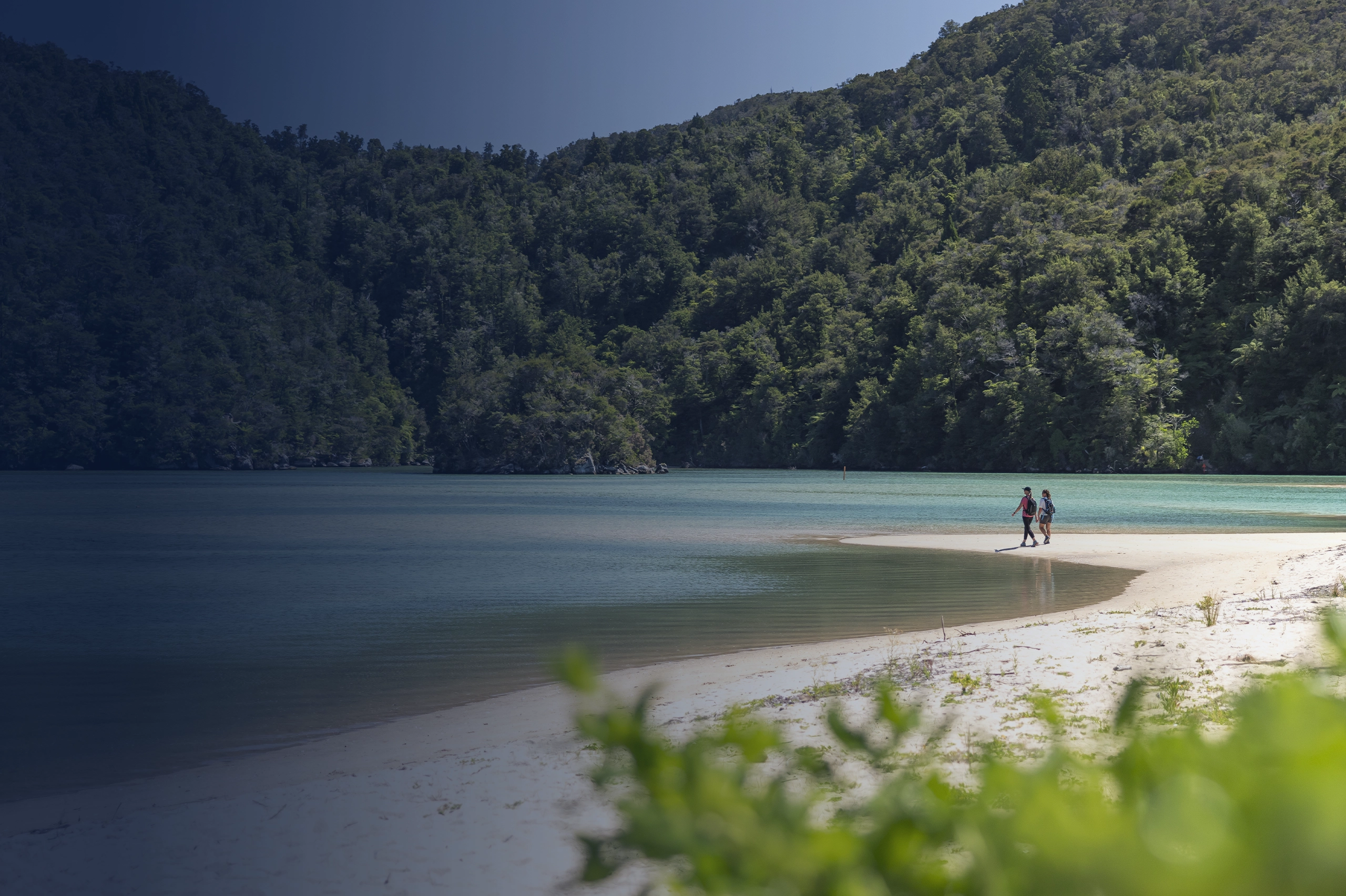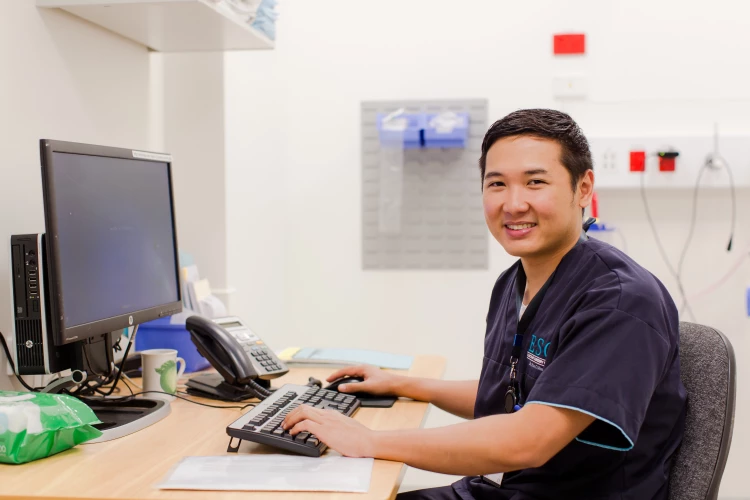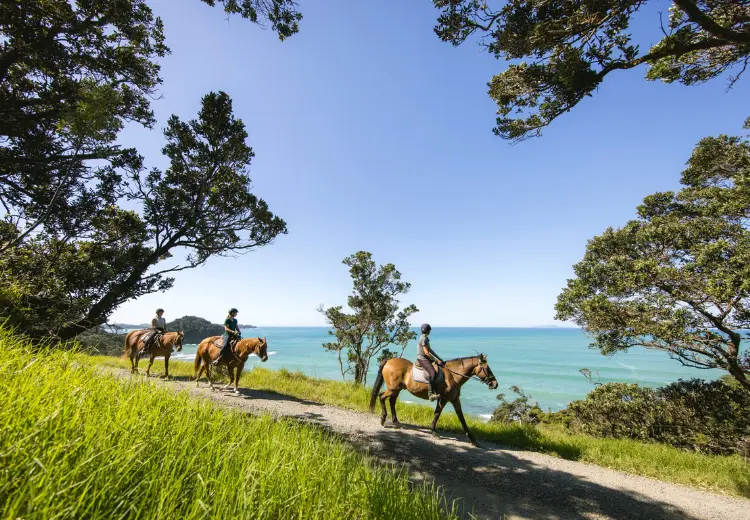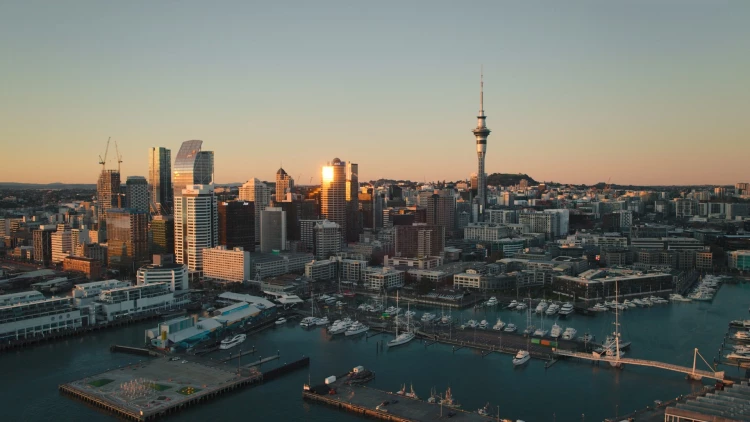- About Health New Zealand
- Locations
- Allied Health
- Midwifery & Nursing
-
Medical Officers
- All Senior Medical Officers (SMOs)
- Anaesthetists
- Dermatologists
- Emergency Medicine Specialists
- GPs & Rural Hospital Doctors
- General Medicine
- Obstetricians & Gynaecologists
- Oncologists
- Paediatricians
- Pain Medicine Specialists
- Pathologists
- Psychiatrists
- Radiologists
- Surgical Specialities
- Resident Medical Officers (RMOs)
- Specialist Teams

Medical Imaging Technology
Medical Imaging Technologists (MITs), including MRI and Nuclear Medicine Technologists, specialise in performing diagnostic imaging procedures to capture detailed images of injuries and diseases. From patient care to image evaluation, these professionals play a crucial role in our multidisciplinary medical teams, delivering world-class care.
Also known as: Radiographer, Radiology Technician, Radiologic Technologist, Medical Radiation Technologist, MRI Technologist, Nuclear Medicine Technologist.
Photo location: Abel Tasman National Park - Credit: Miles Holden
About the role
Working with Health New Zealand - Te Whatu Ora offers a broad range of positions across the country using state-of-the-art technology and where your case mix can be varied.
You'll have the opportunity to work and live in a beautiful location, which could be from in a busy metropolitan centre through to community-focused healthcare in urban or rural settings. This allows you to deliver your best work using remote imaging/scanning alongside a national supportive team to provide care to local, regional, or national patients.

Salary, leave & benefits
Salary:
-
Base scale (Steps 1–7): NZD $77,000 to $108,000
-
Recognition steps (Steps 8–10): Up to NZD $116,000 for advanced practice
-
Senior/leadership roles: May be paid on a separate 19-step scale ranging from NZD $111,000 to $151,000
These rates apply across general and specialist areas like MRI and Nuclear Medicine, unless designated otherwise.
Allowances:
- Higher duties and night allowances
-
Overtime and penal rates
Leave:
-
4 weeks of paid annual leave (increases to 5 weeks after 5 years of service)
-
Shift employees are entitled to up to an additional 5 days’ annual leave on completion of 12 months of employment on shift work
-
-
A minimum of 10 days of paid sick leave per annum
-
6-12 months of parental leave, depending on the length of service
-
up to 14 weeks of paid parental leave
-
-
12 paid public holidays + time in lieu/alternative holiday if rostered on
- Long service leave
Medical Imaging Technologists' Collective Agreement:
In New Zealand, the salary and other benefits of some roles are determined by collective agreements between unions and employers. The full Medical Imaging Technologists collective agreement can be found on the Health New Zealand - Te Whatu Ora website here.
Benefits:
-
Reimbursement of your Professional Registration costs and fees.
-
Health NZ covers your professional indemnity insurance.
-
3 days per annum for your Continuing Professional Development, and some course costs reimbursed.
-
If eligible, a minimum of a 3% superannuation contribution from Health New Zealand as your employer. Find out more here.
Career development opportunities may include:
-
We provide a promising career outlook with job growth and opportunities for advancement. We allow MITs to specialise in advanced imaging modalities, take on supervisory roles, or transition into healthcare administration or education.
-
Opportunity to learn and grow, and work in a national eco-system that provides a case mix ranging from Paediatric, Breast Care, Cancer Care, and Gastrointestinal.
-
Access to many internal educational courses and regular in-house Continuing Professional Development sessions.
-
Coaching, mentoring and achieving learning outcomes for all staff.
Roles & responsibilities
Our team of MITs handle a diverse and complex case mix that includes routine diagnostic imaging, emergency imaging, specialised procedures, and interventional techniques.
Your expertise is crucial in accurately diagnosing and guiding the treatment of various medical conditions while ensuring high-quality patient care across different healthcare environments.
Our work environments across healthcare settings include hospitals, outpatient imaging centres, physician offices, and diagnostic laboratories. Work hours may include shifts, weekends, and on-call hours, especially in emergency and trauma care settings.
Primary responsibilities may include:
Operating imaging equipment:
-
X-rays
-
MRI
-
CT (Computed Tomography) Scans
-
Ultrasound
-
Nuclear Medicine
Patient preparation:
-
Explain procedures to patients to alleviate anxiety and ensure understanding.
-
Position patients correctly to obtain the best quality images.
-
Ensure patient safety by using protective equipment and following safety protocols.
Image analysis:
-
Review and assess images for quality and clarity.
-
Collaborate with radiologists to determine if additional images are needed.
-
Maintain detailed records of imaging procedures and patient data.
Safety and compliance:
-
Adhere to radiation safety guidelines to protect patients and staff.
-
Maintain and calibrate imaging equipment regularly.
-
Ensure compliance with healthcare regulations and standards.
Treaty of Waitangi (Te Tiriti o Waitangi):
-
An understanding and implementation of the principles for better health outcomes
Details of specific roles and responsibilities can be found on our careers site within each open vacancy.
Required qualifications & registration
Professional registration requirements:
-
Medical Imaging and Radiation Technologists need to be registered with the New Zealand Medical Radiation Technologists Board.
-
Hold a current Annual Practising Certificate.
Experience:
-
Solid experience in general imaging, preferably in a larger centre, but this is not essential.
Qualifications:
- Bachelor's Degree: Some positions may require a Bachelor’s Degree in Medical Imaging, Applied Science (Medical Imaging Technology), Health Science (Medical Imaging), Radiologic Sciences or an equivalent overseas qualification (see the NZ Medical Radiation Technologists Board for details).
Information for international candidates
Information for Canadian candidates:
-
In Canada, Medical Radiation Technologists are certified and registered with the Canadian Association of Medical Radiation Technologists (CAMRT).
Information for UK/Ireland candidates:
-
In the UK, Medical Radiation Technologists (MRTs), commonly known as Radiographers, are certified and registered through a structured process involving education, clinical training, and professional regulation.
-
Diagnostic Radiographer will have an Undergraduate Degree (complete a three-year Bachelor of Science (BSc) degree in Diagnostic Radiography from an accredited university) and be accredited Health and Care Professions Council (HCPC) and the Society and College of Radiographers (SCoR).
Information for Australian candidates:
-
In Australia, Medical Radiation Technologists (MRTs) must be certified and registered to practice professionally.
-
Degree programmes may include a Bachelor of Medical Radiation Science (Medical Imaging), a Bachelor of Applied Science (Medical Radiation Science), a Bachelor of Medical Radiation Science (Radiation Therapy), or a Bachelor of Medical Radiation Science (Nuclear Medicine).
-
For Accredited Programmes, the degree programme must be accredited by the Australian Health Practitioner Regulation Agency (AHPRA) or another relevant accrediting body, ensuring the programme meets the required educational standards.
Information for all other international candidates:
Your certification/registration and training will be assessed against the requirements of the MRTB. You can find the best pathway to registration for you on their website here.
Similar position titles used internationally might include:
-
Radiographer
-
Radiographer Technician
-
Radiological Technologists (RTR)
-
Medical Imaging Technician
-
Medical Radiation Technologist
-
Imaging Technician/Technologist
-
Diagnostic Radiographer
-
Radiation Therapist (RTT)
-
Magnetic Resonance Technologists (RTMR)
-
Nuclear Medicine Technologists (RTNM)
Find out more about life in New Zealand
We have a page dedicated to providing information to candidates about our recruitment process, what you need to work in New Zealand and key details about moving here.

Apply for a Medical Imaging Technologist role
Domestically Trained Candidates
If you trained in New Zealand or Australia, search current vacancies with our districts to apply for here:
Internationally Trained Candidates
If you trained outside of New Zealand or Australia, register through our International Recruitment Centre here:
Medical Imaging Subspecialties

Magnetic Resonance Imaging Technologists
MRI Technologists are highly skilled professionals who produce detailed diagnostic images, ensuring patient safety and delivering high-quality care as part of a multidisciplinary healthcare team.

Magnetic Resonance Imaging Technologists
As an MRI Technologist at Health New Zealand – Te Whatu Ora, you will play a vital role in providing high-quality diagnostic imaging using advanced MRI technology. You'll work as part of a multidisciplinary team, ensuring patient safety and comfort while producing detailed scans that aid in diagnosis and treatment. With access to ongoing professional development, career progression opportunities, and a supportive national healthcare network, MRI Technologists at Health NZ enjoy a dynamic and rewarding work environment where they can make a real difference in patient care.
MRI Technologist Salary & Benefits in New Zealand
-
Salary Progression:
-
MRI Technologists have a 10-step progression salary scale, with salaries ranging from NZ$77K - NZ$116K.
-
Designated MRI Technologists (e.g., Team Leaders, Professional Advisors) follow a 19-step progression salary scale, with salaries between NZ$111K - NZ$151K.
-
-
Overtime & Penal Rates:
-
Additional compensation applies for overtime, weekends, nights, and public holidays.
-
-
Allowances:
-
Higher duties and night allowances.
-
-
Leave Entitlements:
-
Annual leave: 4 weeks of paid leave (increasing to 5 weeks after 5 years of service).
-
Shift workers: Eligible for up to an additional 5 days’ annual leave after 12 months of continuous shift work.
-
Sick leave: A minimum of 10 days of paid sick leave per year.
-
Parental leave: Between 6-12 months (depending on length of service), with up to 14 weeks of paid parental leave.
-
Public holidays: 12 paid public holidays + time in lieu/alternative holiday if rostered on.
-
Long service leave is available under certain conditions.
-
-
Professional Registration and Indemnity:
-
Reimbursement of annual practising certificate fees.
-
Employer-provided professional indemnity insurance.
-
-
Continuing Professional Development (CPD):
-
A minimum of 5 days of approved education leave each year, accumulated up to three years.
-
Reimbursement of actual and reasonable expenses for CPD activities, up to $2,500 per annum, accumulative up to $7,500 over three years.
-
-
Superannuation:
-
If eligible, a minimum employer contribution of 3% to your superannuation scheme.
-
-
Career Development Opportunities:
-
Opportunities to specialise in advanced imaging modalities, assume supervisory roles or transition into healthcare administration or education.
-
Exposure to a diverse case mix, including paediatric, breast care, cancer care, and gastrointestinal imaging.
-
Access to internal educational courses and regular in-house CPD sessions.
-
Coaching, mentoring, and support to achieve learning outcomes for all staff.
-
MRI Technologists' Collective Agreement
In New Zealand, salaries and benefits for some MRI Technologists are determined by collective agreements between unions and employers. The full agreement can be found on the Health New Zealand - Te Whatu Ora website.
Education & Registration Requirements:
- Professional Registration Requirements:
-
Registration: All MRI Technologists must be registered with the New Zealand Medical Radiation Technologists Board (MRTB).
-
Annual Practising Certificate: A current Annual Practising Certificate (APC) is mandatory for practice.
-
- Qualifications:
-
New Zealand-Trained Technologists: A Postgraduate Diploma in Health Sciences (MRI) from an accredited institution, such as the University of Auckland, is required. This program is approved by the MRTB and leads to eligibility for registration in the MRI scope of practice.
-
Internationally Trained Technologists: Holders of overseas qualifications in medical imaging or radiation therapy can apply for registration with the MRTB. Their qualifications and experience will be assessed for equivalence to New Zealand standards,
-
Roles & Responsibilities:
- Patient Care:
-
Preparation and Positioning: Inform and prepare patients for MRI procedures, ensuring they are correctly positioned and comfortable.
-
Safety Assurance: Adhere to safety protocols to minimize risks associated with strong magnetic fields, ensuring patient and staff safety.
-
- Imaging Procedures:
-
Operation of MRI Equipment: Utilize MRI scanners to capture detailed images of internal body structures, following established imaging protocols.
-
Image Quality Evaluation: Assess images for clarity and accuracy, adjusting techniques as necessary to meet diagnostic standards.
-
- Collaboration and Communication:
-
Team Coordination: Work closely with radiologists, physicians, and other healthcare professionals to discuss imaging results and contribute to patient diagnosis and treatment plans.
-
Training and Mentorship: Provide guidance and support to junior staff and students, fostering a collaborative learning environment.
-
- Administrative Duties:
-
Record Maintenance: Accurately document patient information, and imaging procedures, and maintain comprehensive records within the Radiology Information System.
-
Quality Assurance: Perform regular checks and maintenance of MRI equipment to ensure optimal functionality and compliance with safety standards.
-
Image Source: University of Auckland

Nuclear Medicine Technologists
Nuclear Medicine Technologists are highly skilled professionals who prepare and administer radiopharmaceuticals, operate advanced imaging equipment, and ensure patient safety while providing precise diagnostic and therapeutic care as part of a team.

Nuclear Medicine Technologists
At Health New Zealand – Te Whatu Ora, Nuclear Medicine Technologists are dedicated professionals who operate advanced imaging equipment and administer radiopharmaceuticals to obtain functional images of patients' organs and tissues, playing a crucial role in accurate diagnosis and effective treatment within a collaborative healthcare environment.
NMT Technologist Salary & Benefits in New Zealand:
Salary:
-
Nuclear Medicine Technologists' have a 10-step progression salary scale
-
Salaries range between NZ $107K - NZ $136K
-
-
Overtime and penal rates
Allowances:
-
Higher duties and night allowances
Leave:
-
4 weeks of paid annual leave (increases to 5 weeks after 5 years of service)
-
shift employees are entitled to up to an additional 5 days’ annual leave on completion of 12 months of employment on shift work
-
-
A minimum of 10 days of paid sick leave per annum
-
6-12 months of parental leave, depending on the length of service
-
up to 14 weeks of paid parental leave
-
-
12 paid public holidays + time in lieu/alternative holiday if rostered on
- Long service leave
Nuclear Medicine Technologists' Collective Agreement:
In New Zealand, the salary and other benefits of some roles are determined by collective agreements between unions and employers. The full Nuclear Medicine Technologists collective agreement can be found on the Health New Zealand - Te Whatu Ora website here.
Education & Registration Requirements:
Professional Registration Requirements:
-
Registration: Nuclear Medicine Technologists must be registered with the New Zealand Medical Radiation Technologists Board (MRTB).
-
Annual Practising Certificate: A current Annual Practising Certificate (APC) is mandatory for practice.
Qualifications:
-
New Zealand-Trained Technologists: Completion of a Postgraduate Diploma in Health Sciences in Medical Imaging (Nuclear Medicine Pathway) from an accredited institution, such as the University of Auckland, is required.
-
Internationally Trained Technologists: Holders of overseas qualifications in nuclear medicine can apply for registration with the MRTB. Their qualifications and experience will be assessed for equivalence to New Zealand standards.
Roles & Responsibilities:
-
Patient Care:
-
Preparation and Administration: Prepare and administer radiopharmaceuticals to patients, ensuring correct dosage and adherence to safety protocols.
-
Safety Assurance: Implement radiation safety measures to protect patients, staff, and the public.
-
-
Imaging Procedures:
-
Operation of Imaging Equipment: Utilize gamma cameras, PET scanners, and other specialized equipment to capture functional images of organs and tissues.
-
Image Analysis: Process and analyze images, ensuring clarity and accuracy for diagnostic purposes.
-
-
Collaboration and Communication:
-
Team Coordination: Work closely with physicians, radiologists, and other healthcare professionals to interpret imaging results and contribute to patient management plans.
-
Training and Mentorship: Provide guidance to junior staff and students, promoting a culture of continuous learning.
-
-
Administrative Duties:
-
Record Maintenance: Accurately document patient information, and procedures performed, and maintain comprehensive records.
-
Quality Assurance: Conduct regular equipment checks and calibrations to ensure optimal performance and compliance with safety standards.
-
Working at Health New Zealand
'Te Whatu Ora' translates from our indigenous Māori language to 'the weaving of wellness'; which is what we are all about in our holistic delivery of world-class care for the health and wellbeing of the 5 million Kiwis in our communities.
Health New Zealand has an open and non-hierarchical approach to improving outcomes for our patients. Our cross-disciplinary collaborative way of working fosters a positive work environment where all members of our team feel supported and empowered.
Our commitment to you
We are dedicated to building a team that is representative of the communities that we are serving. We are committed to supporting health equity in our communities. Our kaimahi (staff) thrives on the diversity and inclusion of all perspectives and cultures, and we welcome individuals from all backgrounds and lived experiences.
Health New Zealand has programmes and facilities available to both protect and improve our teams’ physical, mental and emotional health and wellbeing. We know that you do your best work when you’re feeling your best, so it’s important to us that this is a priority.



Looking to move to New Zealand to work as a Medical Imaging Technologist?
Great news! MITs are on Tier 1 of New Zealand's Green List which means you are eligible for a fast-tracked Straight to Residence Visa.
This means you and your family can apply for New Zealand residency before you arrive, provided you have a job offer from an accredited employer, like us!
Explore Aotearoa
New Zealand - Aotearoa has a broad range of places to call home, from the bustling metropolis of our main centres to the easy-going vibe of our coastal or rural communities.
Use our interactive map of the regions in New Zealand to find out more information about which part of our beautiful country is the best fit for you.

Te Tai Tokerau Northland
Population: 194,600
Northland is a beautiful and diverse region of Aotearoa, New Zealand with plenty to offer visitors. Whether you're interested in water sports, historic sites, natural beauty or ancient Kauri trees—Northland has it all!

Waitematā
Population: 650,000
Waitematā is the largest and one of the most rapidly growing Districts serving the largest population of all Health New Zealand. Waitematā offers a balanced lifestyle that combines the convenience of city living with the natural beauty and community spirit of suburban life.

Te Toka Tumai Auckland
Population: 500,000
Auckland the "City of Sails" is Aotearoa, New Zealand’s largest city and commercial hub. It’s where metropolitan sophistication meets breathtaking natural beauty. Auckland is filled with a variety of warm and welcoming communities, packed with new places to explore.

Counties Manukau
Population: 500,000
Counties Manukau is a vibrant place where there's never a dull moment! Living and working here ensures you're always close to amenities, events and nature. You'll never run out of places to visit or things to do.

Hauora a Toi Bay of Plenty
Population: 255,110
The Bay of Plenty is a place of beautiful harbours, long surf beaches and an easygoing lifestyle. We showcase the perfect place to explore a wide range of nature-based pursuits – this gives the people of the Bay of Plenty the chance for a better work-life balance.

Waikato
Population: 425,000
The Waikato region is known for its natural beauty, rich Māori culture, and agricultural heritage with something to offer visitors of all interests.

Tairāwhiti Gisborne
Population: 48,000
In family-friendly Tairāwhiti you will experience an easier pace to life that allows you to pause, reflect, and enjoy a true work-life balance. Gisborne’s relative isolation is its charm, surrounded by beaches & nature - don't worry though! Larger cities are only a quick flight away.

Lakes
Population: 110,000
The Lakes District is well known for its geothermal activity and natural hot springs. The area is located in the central North Island and is home to many geothermal attractions, such as geysers, hot mud pools, and steam vents. Visitors can also relax in the region's natural hot springs, which are believed to have healing properties.

Taranaki
Population: 130,000
Taranaki is a magical place with a majestic mountain at its heart, including the rugged coastline that's world-renowned for its surf. Its residents' love of art and culture, cafes and outdoor living mean it's also fantastic to work—and play!

Te Matau a Māui Hawke's Bay
Population: 180,000
Known for its world-class wineries, stunning beaches and temperate climate, Hawke’s Bay boasts a lifestyle that is unmatched. The region is a popular destination for food and wine tourism, hiking, cycling and cultural events such as the annual Art Deco festival.

Whanganui
Population: 65,000
Whanganui has something for everyone. Our centrally located region offers access to outdoor activities such as kayaking, skiing, surfing, tramping, cycling, fishing and hunting. Nestled between two snow-capped mountains, on the banks of Whanganui River there is always plenty to do and explore.

Capital, Coast and Hutt Valley
Population: 445,000
Wellington, the capital city of Aotearoa New Zealand, is a bustling and diverse hub of culture and cosmopolitanism, renowned for its lively cafés, restaurants, and internationally acclaimed sporting and cultural events, all set against the stunning backdrop of a natural harbour. To the north of Wellington lie the regions of Porirua, Kapiti, and Hutt Valley.

Te Pae Hauora o Ruahine o Tararua MidCentral
Population: 190,000
Get the best of both worlds - the perfect blend of rural and city living with the mountains, city and sea at your fingertips.

Wairarapa
Population: 48,000
From rugged coastlines, boutique vineyards to lush forests, Wairarapa is a slice of paradise for those who love the outdoors and seek a peaceful environment to recharge after a rewarding day's work.

Nelson Marlborough
Population: 150,000
Nelson Marlborough has been dubbed the artistic capital with a thriving urban centre and one of New Zealand's sunniest regions.

Te Tai o Poutini West Coast
Population: 32,000
Te Tai o Poutini/West Coast has views of both the mountain ranges and the ocean! It is an untamed natural wilderness of beautiful rivers and rainforests, glaciers and geological treasures.

Waitaha Canterbury
Population: 600,000
The Canterbury region is a great place to live and work due to its natural beauty, vibrant economy, cultural diversity, strong community, and high quality of life.

South Canterbury
Population: 62,000
The South Canterbury District is an area of stunning beauty with great lifestyle opportunities, a safe and welcoming family-friendly environment, affordable living, excellent educational opportunities and a wide range of cultural and sporting facilities.

Southern
Population: 350,000
Well known for its beautiful natural scenery, which includes towering mountains, stunning fjords, majestic glaciers, and crystal-clear lakes. The region is also famous for its friendly communities, charming towns, and vibrant cities such as Dunedin and Invercargill.

|
Photo location: Auckland - Credit: Matthew Crawford |




